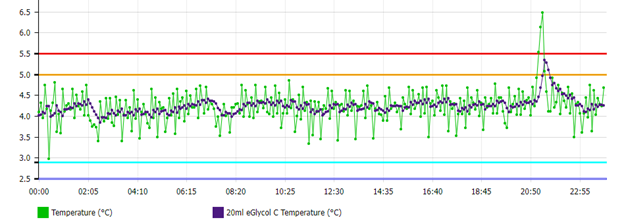Virtual Temperature Buffering
By Michael Rusnack
In the Spring of 2012, the PharmaWatch development was made aware of the Center for Disease Control and Prevention (CDC) requirements that temperature monitors must be placed, including a buffer. The reason for the need was twofold –
- Using a temperature buffer would prevent false alerting due to transient temperature excursions due to activities that included opening the door, refilling, or defrost cycles.
- Secondly, the buffer size and geometry represent the impact of a temperature excursion on the stored good.
The guidance offered by the CDC failed to provide any direction regarding the size or geometry of the buffer. After careful examination by the development team and further research, it was determined that buffer size and container geometry were critical to representing the stored goods accurately.
In July of that same year, the first whitepaper was published (internally) describing the algorithm that would represent any volume and geometry as if the temperature probe were inserted into a glycol-filled buffer. In early 2013, a US Provisional Patent application was filed; a non-provisional filing was completed within the following year. Two patents for this technology were eventually issued.
The early development of the VTB™ constants was developed using standard cylindrical storage containers for all common-sized storage containers. Below is an example of the implementation of the algorithm based on air temperature. It is essential to note the excursion shown to the left was dampened sufficiently not to exceed the alert limit (red line).

Shortly after the commercial application of VTB™ was announced, the eye banking industry requested the application be made available for cornea storage containers. These containers are complex in geometry and are challenging to model. Applying the proven methodologies for
developing the algorithmic constants, the cornea chamber was successfully modeled. As with the standard shapes, the algorithm for physical buffer comparison was demonstrated to be accurate to three-nines when using the Pearson Coefficient. That is, the algorithm is 99% as representative of the physical buffer.
Recently, customers have requested buffer equivalents for IVF applications – 35mm petri dish and 300 and 600 ml blood bags. These complex shapes were carefully modeled and are now available as VTB™ options on the PharmaWatch portal.
Over the years, VTB has replaced physical buffering in over 95% of the temperature monitoring applications from PharmaWatch.
